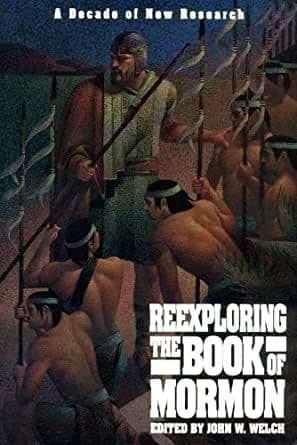Book
85 Chapters

3 Nephi 11:35 “Verily, verily, I say unto you, that this is my doctrine.”
The Book of Mormon uses the terms gospel and doctrine to refer to the way by which individuals come to Christ. Three Book of Mormon passages in particular—2 Nephi 31:2-32:6; 3 Nephi 11:23-39; 3 Nephi 27:13-21—define the gospel of Jesus Christ, each in a distinctive six-point formula. This formula states that if people will (1) believe in Christ, (2) repent of their sins, and (3) submit to baptism in water as a witness of their willingness to take his name upon themselves and keep his commandments, he will (4) pour out his Spirit upon them and cleanse them of their sins. All who receive this baptism of fire and of the Holy Ghost and (5) endure to the end in faith, hope, and charity will be found guiltless at the last day and (6) enter God’s kingdom.
Recent research has detected the remarkable clarity and consistency of numerous Book of Mormon passages that operate with this same definition in mind, indicating that it was both a norm and a paradigm for Book of Mormon writers. This gospel formula, taught by the Book of Mormon, provides a standard language for teaching the message of salvation and the means by which people can come to Christ.
The first comprehensive Book of Mormon statement about the gospel occurs in 2 Nephi 31:2-32:6. It appears to be an amplification of the vision first reported in 1 Nephi 10:4-6 and 11:27-33, in which Lehi and Nephi saw Christ’s baptism and heard his voice saying, “Follow thou me” and “Do the things which ye have seen me do” (2 Nephi 31:10, 12):
Wherefore . . . I must speak concerning the doctrine of Christ. . . . I know that if ye shall [1] follow the Son, with full purpose of heart, acting no hypocrisy and no deception before God, but with real intent, [2] repenting of your sins, witnessing unto the Father that ye are willing to take upon you the name of Christ [3] by baptism . . . then shall ye receive [4] the Holy Ghost; yea, then cometh the baptism of fire and of the Holy Ghost. . . . And I heard a voice from the Father saying: . . . He that [5] endureth to the end, the same [6] shall be saved (2 Nephi 31:2-16).
Second, in the report of Christ’s visit to the Nephites, especially in 3 Nephi 11:23-39, there are also multiple repetitions of the six points of his doctrine. This is the most authoritative definition, because Christ himself delivers it publicly.
During his visit to the disciples a few days later, Christ gave a third defining presentation of the gospel, recorded in 3 Nephi 27:13-21, in which the six basic elements are again elaborated. The Savior indicates that, just as individuals are to take upon themselves Christ’s name, the church will be his if it is called in his name and “if it so be that they are built upon my gospel” (3 Nephi 27:5-13). The one significant difference in this presentation is that it begins by invoking the larger context of the plan of salvation (see 3 Nephi 27:14-16).
These three passages provide the basic definition of the “doctrine” or “gospel” of Jesus Christ as the Nephites understood it. However, they represent only a small portion of the total Book of Mormon statements of the gospel. The same pattern of points of doctrine appears throughout the entire Book of Mormon, informing major sermons and providing an implicit interpretive framework for reports of historical events and discussions or ordinances (e.g., 2 Nephi 9; Mosiah 27; Moroni 3, 7, 8).
Many Book of Mormon statements defining the concept of “gospel” are elliptical, taking the form of merismus,1 a classical rhetorical device in which an entire topic or statement is represented by some of its parts.2 The gospel formula composed of ordered elements lends itself well to this rhetorical device. A typical Book of Mormon merism, mentioning only two of the parts, states that believing in Jesus and enduring to the end is life eternal (see 2 Nephi 33:4).
The other LDS scriptures contain similar statements of the gospel of Jesus Christ, many of which also include merisms (see D&C 10:63-70; 11:9-24; 19:29-32; 20:37; 33:10-13; 39:6; 68:25; Moses 5:14-15, 58; 6:50-53). Drawing on this perspective, Latter-day Saints can see the same definition behind more succinct New Testament passages (see Matthew 3:11; 24:13-14; Acts 2:38; 19:4-6; Romans 1:16; Ephesians 2:8).
Based on research by Noel B. Reynolds, September 1991. For an extended treatment of this topic, see Noel B. Reynolds, “The Gospel of Jesus Christ as Taught by the Nephite Prophets,” BYU Studies31 (1991): 31-50.
1. See pages 80-82 in this book. Paul Y. Hoskisson first drew attention to this phenomenon and its possible significance for this study.
2. See H. Liddell and R. Scott, A Greek-English Lexicon, s.v. “meris” (Oxford, Oxford University Press, 1968); Alexander M. Honeyman, “Merismus in Biblical Hebrew,” Journal of Biblical Hebrew 71 (1952): 15.
Book
85 Chapters
Items in the BMC Archive are made publicly available for non-commercial, private use. Inclusion within the BMC Archive does not imply endorsement. Items do not represent the official views of The Church of Jesus Christ of Latter-day Saints or of Book of Mormon Central.